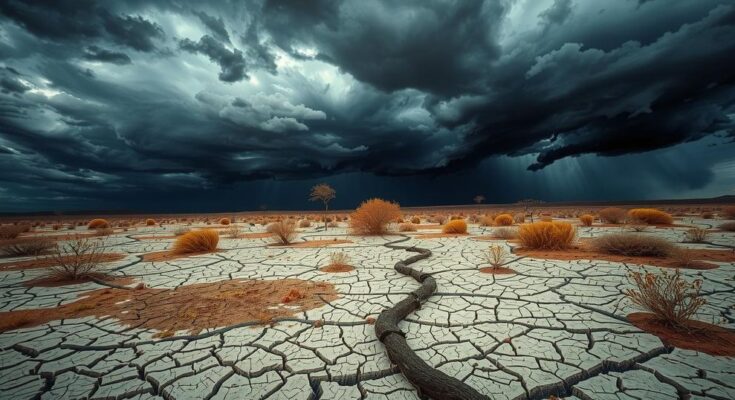This article discusses ten notable climate predictions that have failed to materialize since the 1970s, including claims about species extinction, global temperature drops, and catastrophic effects on human populations. It underscores the ongoing need for a realistic approach in the discourse surrounding climate change.
In recent years, predictions regarding catastrophic climate events have often failed to materialize, highlighting a long-standing trend among climate scientists and activists. Notably, Greta Thunberg amplified warnings from Harvard Professor James Anderson, who claimed that climate change could lead to the extinction of humanity by 2023 if fossil fuel consumption was not curtailed. However, many of these dire forecasts from as far back as the 1970s have proven inaccurate. Below are ten predictions that have not come to fruition.
1. In 1970, S. Dillon Ripley, a conservationist at the Smithsonian Institute, predicted that 75-80% of all species would become extinct by 1995. This prediction has not occurred.
2. Kenneth Watt, an ecologist from the University of California, Davis, claimed in 1970 that by the year 2000, crude oil would run out, agricultural land would be nonviable, and global temperatures would drop by 11 degrees. None of these scenarios happened.
3. Also in 1970, Stanford’s Paul Ehrlich cautioned that up to 200 million individuals could die annually from starvation due to overpopulation, while life expectancy would decline to 42 years, and all ocean life would vanish. His projections were dramatically unfounded.
4. Peter Gunter, in 1970, asserted that food shortages would lead to famine outside of Western countries by the year 2000. This prediction did not materialize.
5. In 1971, NASA’s Dr. S. I. Rasool forecasted a “new ice age” within 50 years, a prediction that also did not hold true.
6. In 1975, Ehrlich again warned that 90% of tropical rainforests and 50% of species would disappear within 30 years. This did not come to pass.
7. Environmental director Hussein Shihab from the Maldives cautioned in 1988 that the nation would be entirely underwater within 30 years, alongside predictions of a drinking water crisis by 1992. Neither event occurred.
8. A 2004 Pentagon report warned of societal collapse by 2020 due to climate change, including predictions of major European cities being submerged, which is inaccurate.
9. Bob Woodruff of ABC News predicted in 2008 that New York City could be underwater by 2015, yet this did not happen.
10. Al Gore projected in 2009 that the Arctic Ocean would be ice-free by 2014, similar to claims made by Greta Thunberg for 2022. This prediction also did not hold true.
The succession of failed predictions raises important questions about the accuracy and reliability of climate forecasts. While the effects of climate change remain a critical concern, these past misjudgments highlight the need for grounded and realistic expectations in climate discourse.
In summary, the historical record of climate predictions reveals a pattern of alarming forecasts that did not materialize. This collection of ten notable inaccuracies illustrates the importance of relying on evidence-based data rather than sensationalism. As we confront ongoing climate challenges, it becomes essential to strike a balance between urgency and realism in addressing environmental issues.
Original Source: freebeacon.com




